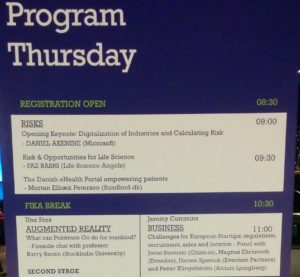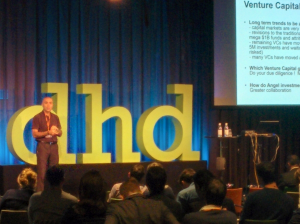Growth Arena at Grant Thornton
Now I have been to my third entrepreneurship event and my passion for the subject is increasing for every time. We started the morning with a networking at Grant Thornton’s office and thereafter continued with four presentations. The topic that really triggered me was digitalization and how important it is for a business to keep itself updated and use new technology to stay in business. We also discussed Swedish school system and how a complex organization, like Skolverket, tries to fit in to the digital world.
Since it is of huge importance to always stay updated and observant for external changes here is my 4 tips for running a business successfully:
External analysis. The world is constantly changing – even faster than before and it is vital to stay updated. My tip is to use a person from without the organization to do the external analysis so your love for the company doesn’t impact your judgement, for example KODAK and NOKIA forgot about this.
Big data – Many companies use big data today without really knowing how or why. Collecting data is important but the most important thing is to have an idea of how the data can be used to have a positive impact on your organization. How can you get more customers? Do you need to change your products? How do your customers use your product? etc. Rather collect a small amount of data with a clear objective than collect big data without any really train of thought.
Find a problem and develop the solution. Do not go the other way around i.e do not construct a product/service and try to find a problem that your product solves. This will never feel 100% right.
Be brave and charge! It is hard do raise price later and also pricing your product is a good way of knowing if your customers appropriate your product.
I really recommend the book ”Get digital, or die trying” by Gilan and Hammarberg if some one is interesting of reading more about the digital take on.


 cles to relax. Electrical stimulation is used to reduce the tension in muscles, as well as spasm. The electrodress is used by people with stroke, brain damage, etc [1]. In the first part of the episode (you can find the link down below) you will see a little girl that, after using the elektrodress, has got the ability of moving her legs and doesn’t need to inject any medication any longer.
cles to relax. Electrical stimulation is used to reduce the tension in muscles, as well as spasm. The electrodress is used by people with stroke, brain damage, etc [1]. In the first part of the episode (you can find the link down below) you will see a little girl that, after using the elektrodress, has got the ability of moving her legs and doesn’t need to inject any medication any longer.
